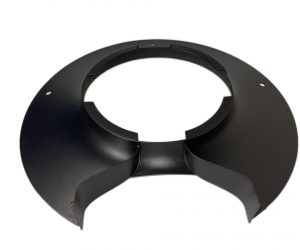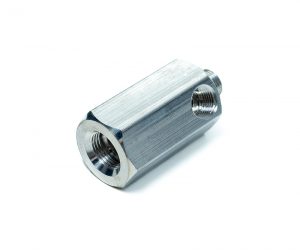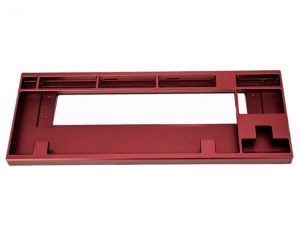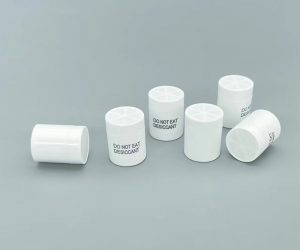Dive into the awesome world of aluminum molds and see what you can create! These molds are super tough and versatile, Let’s get crafting and see where our creativity takes us!
I. Introduction to Aluminum Molds
Aluminum molds are a cornerstone in the world of mold casting, offering remarkable benefits for artisans and manufacturers alike. They combine durability, versatility, and precision, making them an indispensable tool for both industrial production and creative craftsmanship. Whether you're an artist looking to craft intricate designs or a manufacturer engaged in mass production, aluminum molds provide a reliable foundation for turning ideas into reality.
Understanding the Benefits and Advantages
Durability and Longevity
Aluminum molds are known for their impressive durability. Unlike silicone or plastic molds that can degrade over time, aluminum molds can withstand high temperatures and repetitive use without warping or deteriorating. This makes them especially useful for high-volume production, where mold longevity is crucial.
Heat Conductivity
One of aluminum's standout properties is its excellent heat conductivity. This allows molten materials to cool evenly and solidify with precision, minimizing defects and ensuring consistent results across multiple castings. Whether working with metals, plastics, or resins, aluminum molds facilitate a more reliable casting process.
Lightweight and Easy Handling
Despite their strength, aluminum molds are relatively lightweight compared to materials like steel. This makes them easier to handle and manipulate, reducing fatigue during the casting process and simplifying mold setup and demolding.
Exploring the Versatility of Aluminum Molds
Precision and Detail Reproduction
Aluminum molds are capable of capturing highly intricate details, making them ideal for projects that require fine replication. Whether it's an ornate piece of jewelry, a delicate sculpture, or a complex industrial part, aluminum molds can reproduce even the finest features with exceptional accuracy.
Compatibility with Various Materials
Aluminum molds are versatile in terms of the materials they can cast. They are compatible with metals, plastics, resins, wax, and more. This wide range of material compatibility opens up endless creative possibilities, from designing functional components to crafting artistic works.
Scale and Complexity
Aluminum molds are capable of producing both small, intricate pieces and large, complex structures. This adaptability makes them a go-to choice for a broad spectrum of applications, from one-off art pieces to large-scale industrial components.
II. Techniques for Aluminum Mold Casting
Preparing and Designing Aluminum Molds
The success of an aluminum mold casting project begins long before the molten material is poured. Proper preparation and design are key to achieving flawless results.
- Creating the Master Pattern
The first step is creating a master pattern, which serves as the basis for the mold. This pattern can be made from various materials, such as clay, wax, or even a 3D-printed prototype. The design must be precise, as any flaws in the master pattern will be replicated in the final casting. - Coating with a Release Agent
A release agent is applied to the master pattern to ensure smooth removal from the mold after casting. This prevents the casting material from sticking to the mold and damaging the finished piece. - Creating the Mold
The master pattern is encased in a two-part mold, often made from flexible materials like silicone, which captures every detail of the pattern. Once the silicone is cured, the mold is carefully separated, leaving behind an exact negative of the pattern.
Melting and Pouring Aluminum
- Melting the Aluminum
Aluminum melts at approximately 660°C (1220°F), which is relatively low compared to other metals. A furnace or crucible capable of reaching this temperature is necessary for the process. It's essential to remove impurities (known as "dross") from the molten aluminum, which can be done by skimming or using flux. - Pouring the Aluminum
Once the aluminum is molten and purified, it’s carefully poured into the prepared mold. The pouring process must be slow and steady to avoid introducing air bubbles, which can ruin the casting. Ensuring that the molten aluminum fills every intricate detail of the mold is crucial for a successful cast.
Demolding and Finishing Techniques
After the aluminum has solidified and cooled, the mold can be carefully removed. The flexible silicone mold allows for easy demolding, preserving the fine details of the casting. However, after demolding, the piece may require additional work, such as:
- Removing Flash: Excess material around the edges of the cast, known as "flash," can be removed using tools like files or sandpaper.
- Polishing: To achieve a smooth, shiny surface, the cast may need to be polished.
- Post-Processing: Depending on the project, additional steps like painting, plating, or applying protective coatings may be required to achieve the desired finish.
III. Advanced Applications of Aluminum Molds
Creating Complex and Intricate Designs
Aluminum molds are perfect for producing complex, detailed designs. Their ability to capture fine details allows artisans to create everything from intricate jewelry pieces to elaborate decorative items and functional parts. With the right design, aluminum molds can handle the demands of sophisticated projects, whether it’s a single item or multiple units in a production run.
Replicating Fine Details with Precision
The precision of aluminum molds is one of their most powerful attributes. Every small feature in the master pattern is replicated with astonishing accuracy. To enhance this precision, techniques such as vacuum casting or pressure casting can be employed to ensure that molten material fills even the smallest cavities and reproduces every minute detail of the design.
Leveraging Aluminum Molds for Large-Scale Productions
In industrial applications, aluminum molds are not only durable but also optimized for high-volume production. Aluminum’s ability to withstand repeated use makes it ideal for creating large quantities of identical pieces, such as automotive parts, machinery components, and consumer products. The lightweight nature of aluminum molds also reduces handling time and increases operational efficiency in large-scale manufacturing.
IV. Troubleshooting and Maintenance
Common Challenges in Aluminum Mold Casting
While aluminum molds are reliable, certain challenges can arise:
- Air Bubbles or Voids: These can occur if the mold isn't vented properly or the molten material is poured too quickly. Techniques like vacuum casting or pressure casting can help minimize these defects.
- Shrinkage or Warping: Aluminum has a high thermal expansion coefficient, meaning it can shrink or warp as it cools. This can be managed by using proper gating and risering systems and ensuring controlled cooling.
Maintaining and Extending the Lifespan of Aluminum Molds
To ensure your aluminum molds last as long as possible:
- Clean Regularly: Keep the molds free from debris and old casting material to ensure optimal performance.
- Lubrication: Use appropriate mold release agents or lubricants before each casting cycle to make demolding easier.
- Inspect and Repair: Regularly check molds for wear, cracking, or deformation. If the mold is damaged, professional repairs can extend its useful life.
- Proper Storage: Store molds in a dry, cool place to prevent corrosion and deformation.
V. Resources and Inspiration
Online Communities and Forums
Engage with other mold casting enthusiasts by participating in online communities. Popular forums include:
- Reddit’s r/MoldMaking: A space for mold makers to share tips and advice.
- The Foundry Zone: Offers resources, tutorials, and forums for various casting techniques.
- Metal Casting Forum: A place to discuss all aspects of metal casting, including aluminum molds.
Recommended Books and Tutorials
- "The Art of Mold Making" by Hunter Lyden: A guide to various mold-making techniques, including aluminum molds.
- "Metal Casting: A Sand Casting Manual for the Small Foundry" by Stephen Chastain: While focused on sand casting, this book provides valuable insights for aluminum mold casting as well.
VI. Conclusion
Aluminum molds are an indispensable tool in the world of creative craftsmanship and industrial production. Their durability, precision, and versatility make them ideal for a wide variety of applications, from delicate jewelry pieces to large-scale industrial components. By mastering the techniques of aluminum mold casting, you can unlock a world of creative possibilities and produce high-quality, detailed castings with confidence.
With the proper preparation, knowledge, and attention to detail, aluminum molds will serve as a reliable and flexible medium for turning your creative ideas into tangible works of art or functional components. Whether you're exploring new artistic avenues or embarking on industrial production, aluminum mold casting offers an exciting and rewarding journey into the world of craftsmanship.




